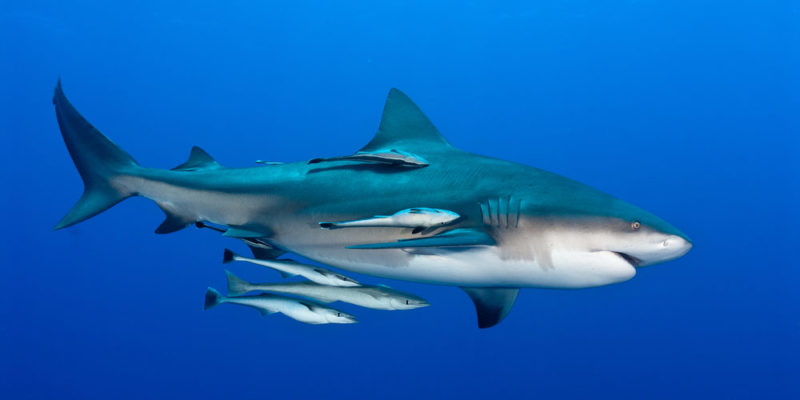Example of Commensalism. Commensalism is known as a specific type of interspecific biological interaction, that is, interaction between individuals of different species.Some living beings establish symbiotic relationships with each other to obtain some benefit. Commensalism occurs when one living being obtains benefits from another while the other is neither benefited nor harmed.
Example of Commensalism In Biology.
Some common examples of commensalism are:
- The remoras. Small saltwater fish capable of attaching themselves to larger and stronger animals, such as sharks, to take advantage of their fast swimming ability and move from one place to another quickly.
- Sea acorns. A genus of immobile marine crustaceans, they live on the shells of mussels, oysters and other bivalves, as tenants.
- Hermit crabs. With a soft abdomen, they take advantage of the empty shells of sea snails to enter and protect themselves, as if it were their own.
- Certain species of epiphytic plants, not parasites. They live on the branches of large trees, thus accessing levels of sunlightthat are scarcer at ground level .
- Birds that perch in a tree, building nests among the branchesand foliage or sleeping among the branches.
- Certain plantscan disperse their seeds after one or more colonies of ants have swept through an area of the forest , eliminating all other plants.
- The woodpecker, which bores holes in certain trees to build its nest there.
- The fliesthat lay their eggs on the carcasses of other animals , so that their larvae can feed.
- Certain classes of insectsthat inhabit the burrows of field mice , feeding on the roots that protrude from the roof of the burrow.
- Various classes of apesuse the branches and tops of trees as a habitat and food source .
- Crabs using snail shells for protectionand home.
- Building beehives intrees .
- When a furry animal, walking through a field, drags plant seeds attached to its hair.
- Methanotrophic bacteriathat consume methane from methanogenic archaea .
- Herons that feed near herds of ungulates, as these disperse the insects theyfeed on.
- The anemonesthat use some mussel shells , without causing any damage to them.
- The remorasthat as a means of transport to the sharks, without causing them any harm.
- The dung beetlesthat take advantage of the feces of other animals for which these are nothing more than a discard.
Other types of interspecific relationships.
In addition to commensalism and mutualism, which we have already talked about, there are the following types of interspecific relationships:
- Parasitism. It occurs when one species benefits from the other nutritionally or in another way, that is, it obtains benefits from it, but in this case causing damage of some kind. A perfect example of this are mosquitoes, which feed on the blood of animals to incubate their eggs, being able to in turn transmit diseases to which it serves as a contagion agent.
- symbiosis. It is a very narrow degree of mutualism, in which the species involved end up becoming codependent, that is, needing the presence of the other to survive or to complete their life cycles. A good example of this is the relationship between an alga and a fungus to form a lichen, exchanging structure for moisture and nutrients.
- competition. Quite the opposite of commensalism, it occurs when two species compete or face each other for access to the resources necessary to survive, so only one of them can benefit. This is the case, for example, of the competition between hyenas and vultures, or other African scavengers, to devour the remains of the lion hunt .
- predation_ The fundamental type of interaction in the trophic chain consists in that one species (the predator) hunts and devours another (the prey ), thus obtaining a nutritional benefit and ending the existence of the other. This is what happens when a fox hunts down a rabbit and devours it.
- Amensalism. In this case, the interaction between the species is detrimental to one of them, without the other obtaining any type of benefit in return. This is the case with trees such as Eucalyptus or Walnut, for example, which prevent the growth of other plant species around them, without being directly benefited in the process .
